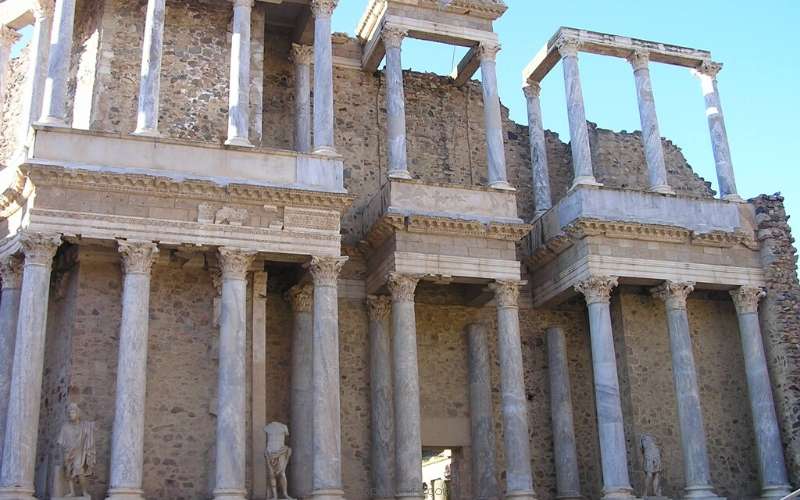
Inside: The best Roman ruins in Spain for history buffs. Prepared to be amazed.
Ancient Rome left behind not just roads, aqueducts and schools, but epic proportions of quality architecture as a testament to the advanced technology of their incredible civilization.
The Romans did quite a bit for the countries they ruled over, and as their Empire expanded, Spain became a leading example where some fascinating sites got tucked away in different corners of the country.
Fortunately, much of what they built still remains intact today, so read on to know which twenty one sites to visit in Spain, to get your full dose of Roman heritage.
21 Magnificent Roman Ruins in Spain
1. Merida
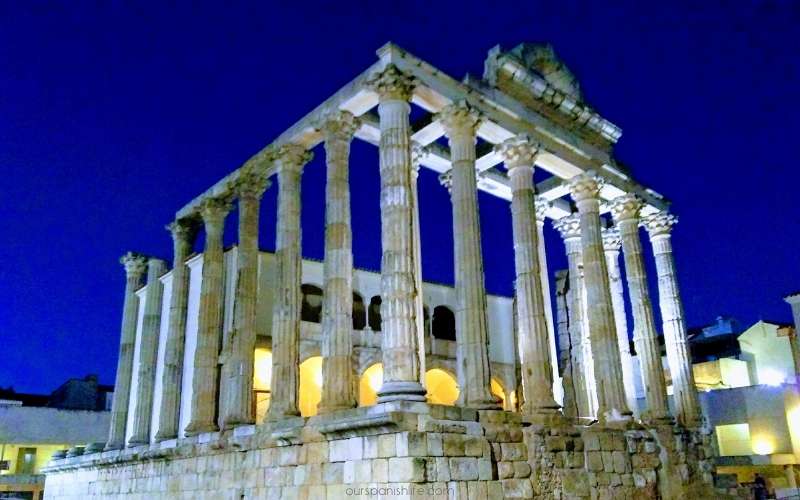
Roman ruins seem to materialize out of nowhere in Merida, the one time capital of the province of Lusitania.
Two iconic landmarks can be found in the most unlikely of all places-one behind the information center (The Temple of Diana) and the other rising up above the railroad tracks(Los Milagros Aqueduct).
A stroll a bit further up, along the Guadiana river, a Roman bridge will come into view, the longest at half a mile existing anywhere in the world.
Macabre lovers will get a thrill after checking out on the Los Columbarios funeral site, which showcases all information about Roman funeral rituals.
2. Tarragona
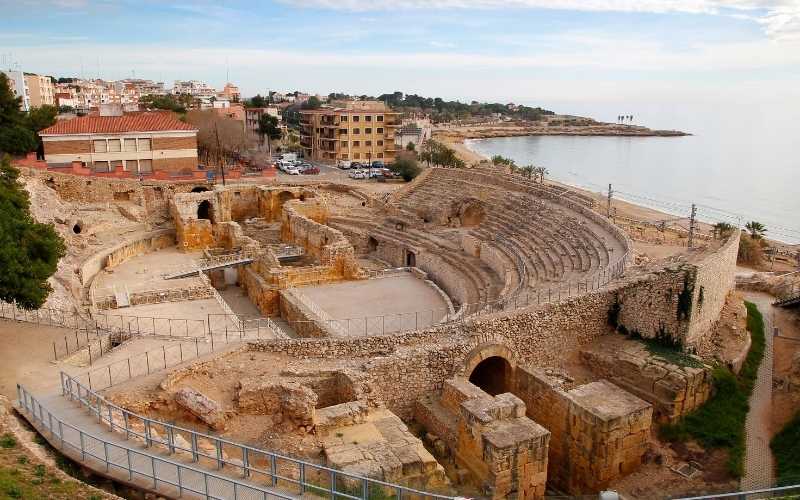
This seaside town of Tarraco, 100 km south of Barcelona, was the capital of Hispania Tarraconensis and an important province of the Roman Empire.
There are as many as thirteen UNESCO listed Roman remains, with the most popular being the Amphitheatre.
Carved in a hillside, this used to be a regular venue for public executions and gladiator contests.
The Roman Circus was built in 1 AD to stage circus and chariot races. Another testament to Roman engineering is the aqueduct,4 km from the city centre, which remained as a water supply source till the 18th century.
The Archaeological Museum, The Provincial Forum, Paleochristian Museum, Tarragona Cathedral, Casa Castellaranau are some of the other ancient ruins here.
3. Segovia
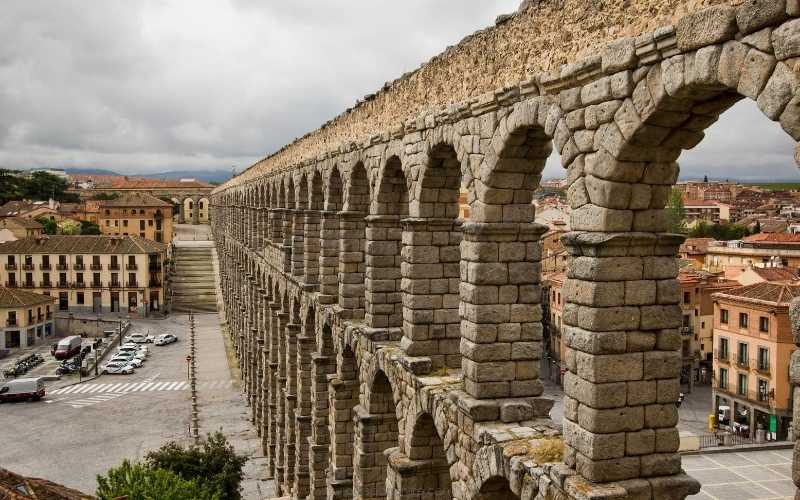
Totalling fifteen kilometres in length, the 1st century aqueduct of Segovia, supplied water to the city from Frio River as late as the twentieth century.
This unique 221 pillar structure of the Roman Empire has still managed to retain its shape and original character and is a prominent landmark of Segovia.
Other important remains are the Alcazar, noble houses dating back to the 15th century, several Romanesque churches, a beautiful 16th century Gothic cathedral and the Segovia Mint, the oldest building of industrial importance still standing in Spain.
Related: 9 Best Places to Visit in Spain for First-Timers
4. Lugo

The tiny city of Lugo, located about 100 km east of Santiago de Compostela, is filled to the brim with historic artifacts.
A UNESCO World Heritage site, Lugo represents one of the best examples of Roman architecture, like the Cathedral de Santa, originally built in the twelfth century in the perfect Gothic style.
Head over to ground level to explore the Domus Oceani, an original Roman mosaic featuring motifs showcasing the place in its heyday.
Then there are the six elegant arches of the 2000 old Lugo Roman bridge which makes for a good photo shoot. Outside the city walls, Lugo also has its own Roman baths
5. Seville
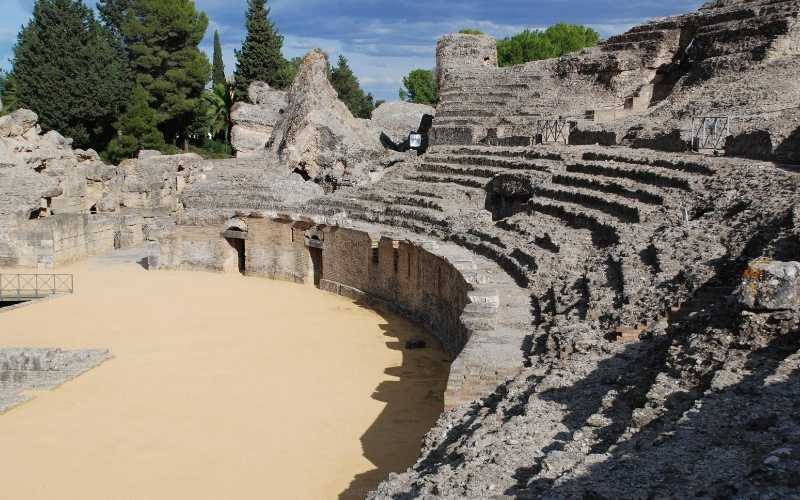
Located 9km north of Seville, are some of the best preserved Roman ruins to be found in Spain.
Being the birthplace of two wealthy Roman Emperors, Trajan and Hadrian( of the Wall fame), the influence of money is aptly reflected in the amazing and colorful mosaic work.
Another feature of lavish spending was the construction of an amphitheatre to seat 25,000 spectators whereas the population of the town was just 8,000.
Having said that, the prized displays here are elaborate mosaics, unlike to be found anywhere else in Spain, especially those at the House of Planetarium.
6. Cordoba
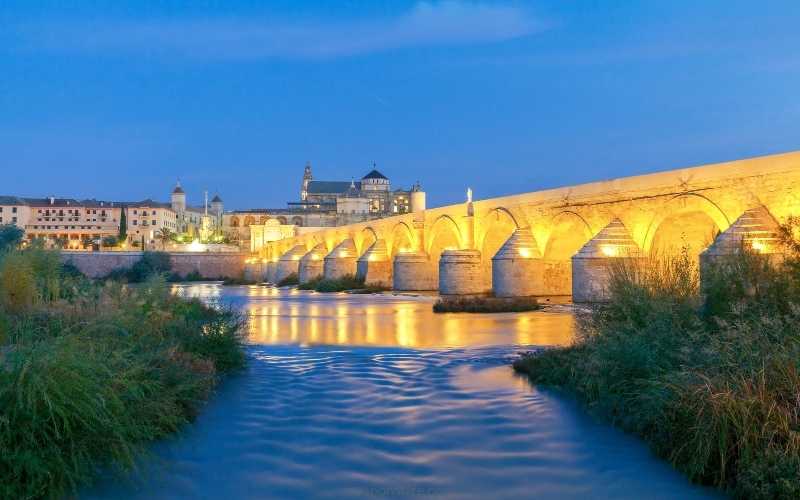
This city of World Heritage importance in the province of Andalusia, Cordoba, has some of the best preserved Roman ruins in Spain.
At the entrance to the walled city is the Roman Bridge. While the walls have remained intact all these years, so has the amphitheatre here, the second largest in the Roman Empire during that period.
The nearby fortified palace of Alcazar, houses mosaics dating back to the 2nd century.
The Romans constructed many temples in Cordoba, evidence of which is found in the many still standing columns in the city square.
The patio at the St Victoria School is another example of how the nobility lived.
Related: 6 Cheap or Free Things to Do in Cordoba, Spain
7. Barcelona
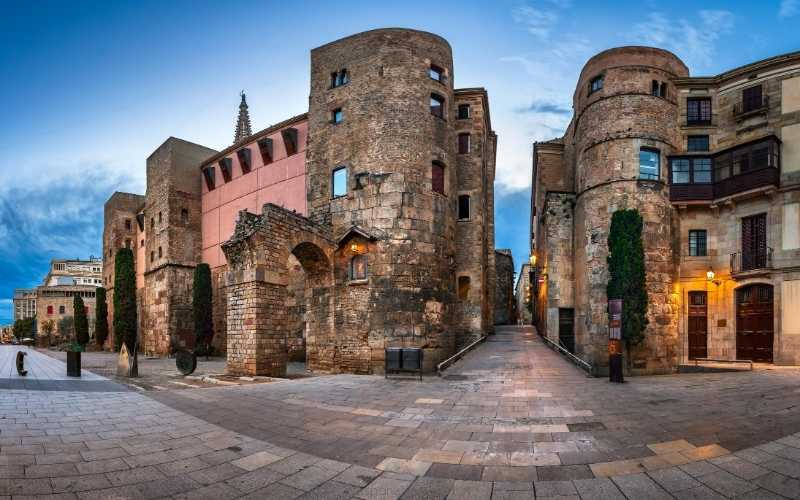
Historically speaking, Barcelona, or Barcino, has the most extensive underground Roman remains in the world.
This is depicted within the Mudra d’Historia de la Ciutat with its ancient streets, squares and stone chambers.
Dating back to the first century, these ruins,16 feet below the ground, showcased the everyday life of the Romans.
As you walk through this fascinating subterranean maze, maps of the city walls and remains of towers, a dyeing workshop and a fish salting factory can be seen along with many other artifacts.
Another dominating structure in the Roman forum was the Barcino Temple with its four grand columns, located in the Old Town.
Remains of walls and defence towers can be seen at many locations around Barcelona.
8. Toledo
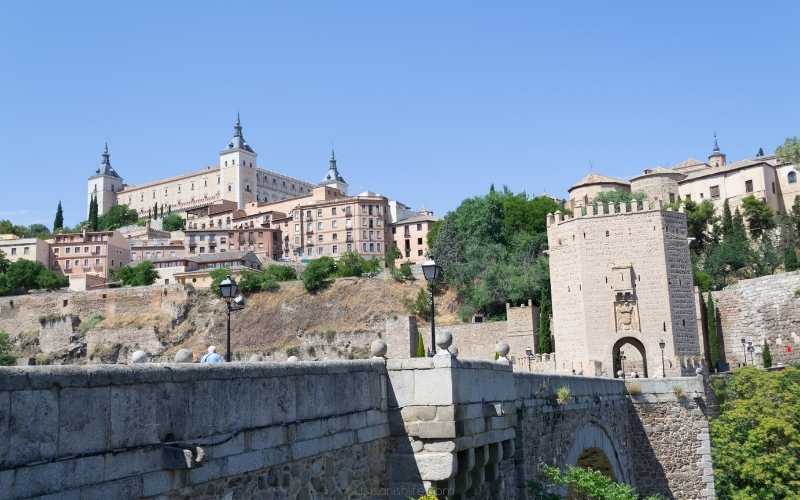
Toledo became a part of the Roman Empire in 192BC and gained instant prominence being a military settlement.
The ancient dam and water supply channels, or aqueducts, are clearly visible in the city.
The sights of Toledo are never ending with the ruins of a Roman circus and the Puerta de Bisagra Nueva city gate.
A mysterious cave exists beneath the church known as La curva de Hercules.
Despite the misleading title, one gets a glimpse of the excellent water management science of the Romans, preserved below the streets of Toledo
9. Baelo Claudia

The town of Bolonia lies in the Cadiz province of Southern Spain and is where the ruins of Baelo Claudia can be explored.
While the village of Bolonia is itself famous for watersports, the ruins are also an important landmark of the place and a popular half-day trip for tourists.
The main feature of the ruins is its stunning location, from where the harbor area, the fish salting baths and the Forum and Basilica are easily visible.
Roman engineering feats are clearly visible in the two well-restored ruins of the Roman theatre and the aqueduct, which served as a source of water supply to the city.
10. Cartagena
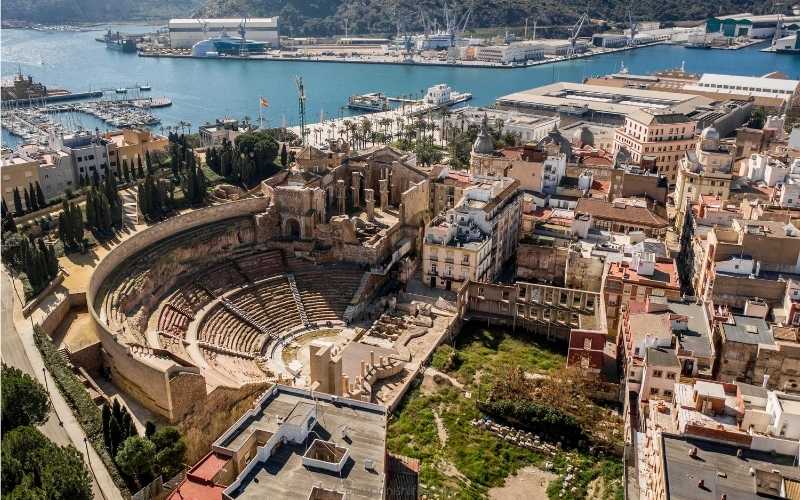
If there is any place in Spain where you can pamper yourself in a thermal bath, exactly as the Romans used to do thousands of years ago, then just make a beeline for Cartagena.
Once you are through with the treatments, make sure you check out on the Roman Forum and the Atrium.
Even though the city was burnt to the ground by the Romans, there is enough evidence of items salvaged from the ground which will fill with joy the hearts of people seeking Roman remnants.
Most of these are exhibited at the Cartagena Roman Museum.
11. Zaragoza
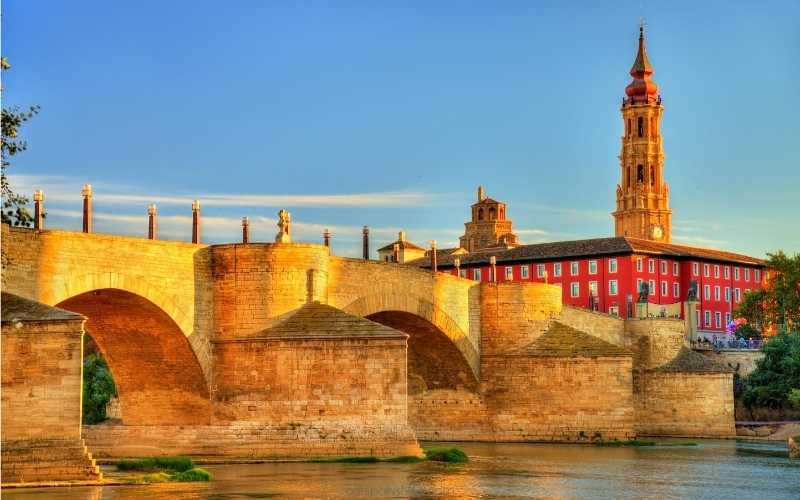
The Romans have certainly left their mark on the city of Zaragoza, with parts of the Forum visible even today beneath the city centre.
This is the only Roman city which had the privilege of being named after its founder, Caesar Augustus.
Cesaraugusta was surrounded by walls and as many as 120 towers.
Under the city lay another world, which had remained undiscovered for over 1500 years.
When excavated, the genius of the Romans was evident in the layout and creativity.
The Roman theatre was protected by a large polycarbonate roof. Other hidden in the subterranean spaces are Museo del Puerto, a river dock, and Museo del Teatro de Caesaraugusta, an amphitheatre said to be the largest in Hispania.
12. Malaga
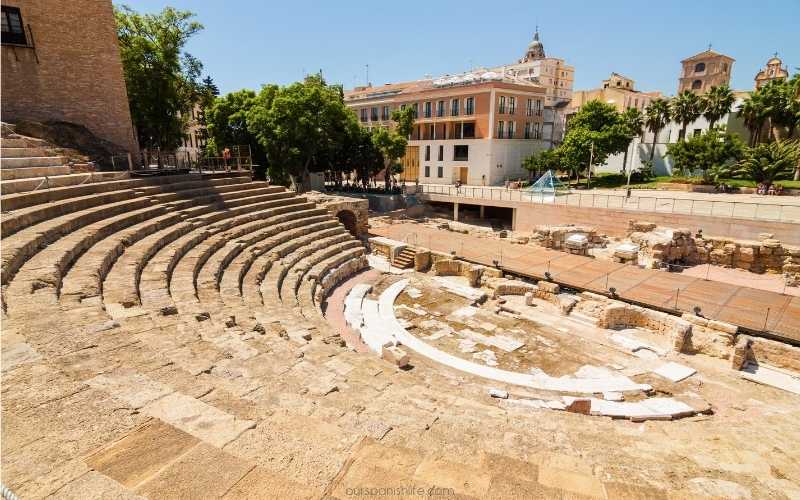
At the foot of the famous fortress, Alcazaba, lies El Teatro Romano, the oldest surviving Roman ruin in the heart of Malaga.
It’s a great way to experience some of Spain’s Roman ruins, even if you only have one day in Malaga.
The theatre was built in the first century BC by Emperor Augustus and was in use for two hundred years, before it fell into neglect.
Today a walk around the arena will clearly identify the orchestra section and the white marble seats where the spectators sat.
However, the 300 odd years the Romans spent here were enough to leave more indelible marks on the city.
Important archaeological remains from where the Garum fish sauce factories operated can be seen in the basement of the Picasso museum.
Other finds here include sculptures and marble torso’s of Emperor Augustus.
Related post: Malaga Pass: A Budget-Friendly Way to See the Best of Malaga
13. Emerita Augusta
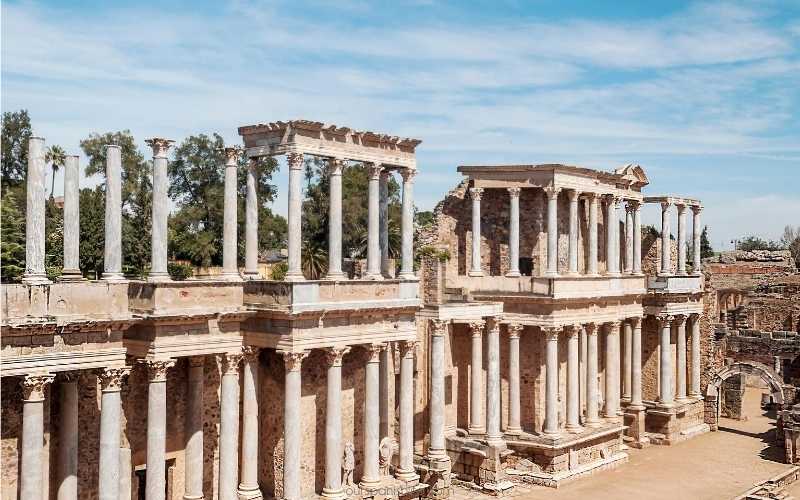
Miles away from civilization, right in the middle of nowhere, the desert city of Emerita Augusta, actually served as an old age home for the retired soldiers of the Roman army, allowing them to spend their golden years in relative comfort.
Even today few venture out to this inhospitable and difficult to access area, but the hardy few who make it, are rewarded with Roman ruins galore.
The Theatre of Emerita Augusta is the most magical part of the city, where ancient traditions are still being followed.
Apart from this there as an amphitheatre which held bullfights and gladiator contests.
The vast temple of Diana is the crown jewel of the city centre.
A rare remnant, the only one of its kind in Spain of Visigothic architecture is Xendoquio, is found here.
14. Carmona
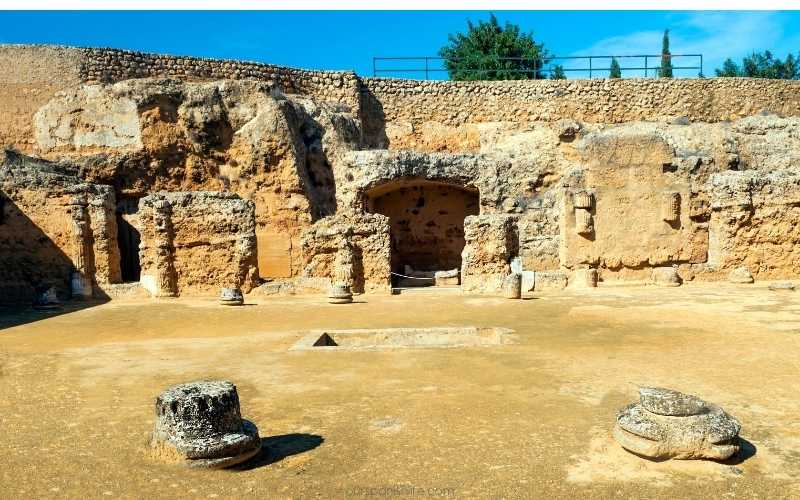
Another important site in Andalusia, this remarkable archaeological region dating back to 1C AD, houses over 300 tombs and cremation ovens.
A visit here features Roman Spain’s most significant treasure, the large Necropolis discovered only at the end of the nineteenth century.
It is situated on a low hill at the opposite end of the city.
These tombs have been carefully hewn from rock and contain many funeral urns, a large number still intact.
Some of the bigger tombs even have benches for banquets after the funeral. Many walls are adorned with carved family emblems.
A true way to learn how the Romans buried their dead in elaborate underground vaults.
15. Empuries
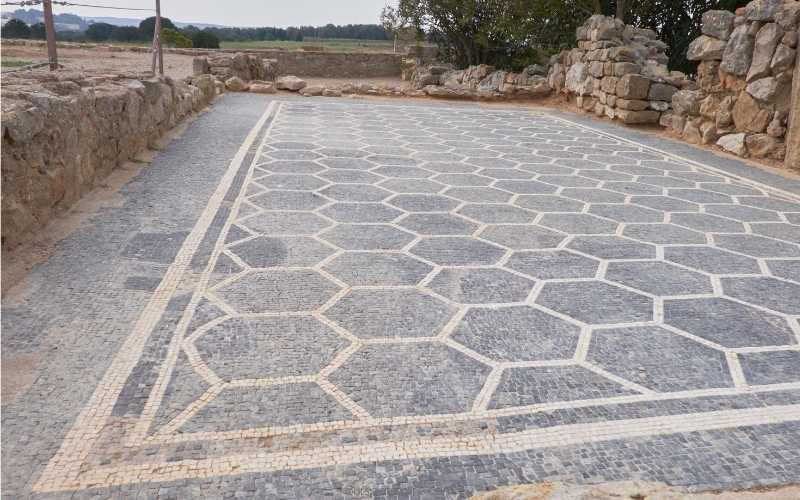
The name Empuries, was derived from the Greek word ‘Emporion’ meaning market place, and gives the correct description of the trading city on the erstwhile delta of the river Fluvia.
For numerous historians, a visit to the ruins of Empuries is an annual ritual not to be missed.
Located just two kilometres away from L’escala, the site can be easily approached by foot.
Today one can see examples of both Greek and Roman construction art in Empuries, from the just 25% excavation which has been carried out till now.
For a moving experience, stroll along the intricate network of walls, columns and admire the priceless paintings and mosaics.
The basilica and the amphitheatre will portray what life was like in those times.
Among the ruins is a temple dedicated to Jupiter and a statue of Aesculapius, which can be found amidst the altars.
16. Carranque Archaeological Park
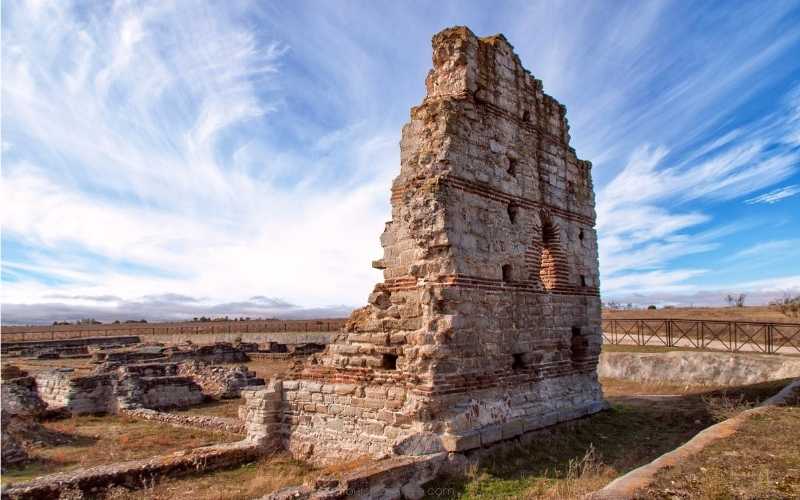
Discover the oldest Christian Church in Spain and then step back further in time to visualise a life of luxury featuring internal heating, marble columns and stunning mosaics at the fascinating Carranque Archaeological Park, less than an hour by road from Madrid.
This captivating jewel lay buried till as late as 1983, and since then treasures are being unearthed thick and fast.
Indeed, there are few sites where so many Roman mosaics can be seen as soon as they have been restored.
Three buildings are open to visitors including the Palatial Building with its still standing 32 monolithic marble columns, the Mausoleum housing the remains of the owner and Villa of Maternus with its impressive mosaics.
Related: In Spain, a mosaic of ruins forms a picture of life in a major outpost of the Roman Empire
17. Acinipo
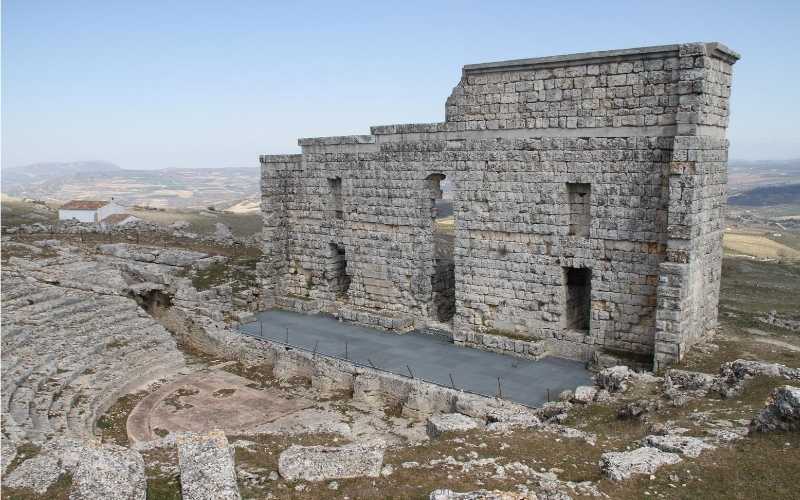
The Roman ruins at Acinipo, near the village of Ronda, depict the remains of the strategically located settlement of Ronda La Vega.
The major attractions here are the Roman theatre dating back to the first century and the excavated Roman baths.
The ruins are well preserved and one can easily make out the erect walls and seating area of the 2000+ capacity theatre as well as the layout of the warm and cold rooms at the baths.
The top of Acinipo provides stunning 360 degree panoramic views of the site and the surroundings.
18. Madrid
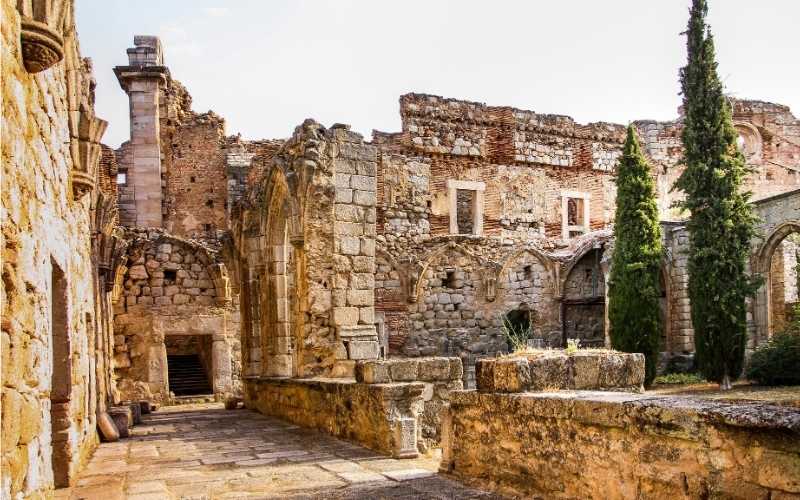
While there is no doubt that there are stunning Roman ruins to be discovered all over Spain, the lovely capital of Madrid leads the group with its well preserved monuments and historical sites, imploring enthusiasts to make a visit.
To gain a full insight of the city’s glorious past, you just have to take notice of these prominent spots.
Starting from the Royal Palace, with its beautiful Baroque interiors, to the Basilica de San Francisco el Grande, there is much to explore for architecture enthusiasts.
Having said that, do not forget to see the Estacion de Atocha, the main railway station of Madrid, dating back to 1851 when it was inaugurated.
19. Avila

If ever there was a city to showcase the epitome of Spain of the old, then the many churches, convents and high walled palaces of Avila justified the same.
Hardly 117 km from Madrid, Avila has managed to remain a best preserved bastion of Romanesque and Gothic churches in Spain.
The eight imposing entry points of the city and the 88 watchtowers signify the strategic importance of Avila.
While the Old City is a UNESCO World Heritage site, outside the Murallas city walls lies the church of basilica St Vicente, built in the 12 th century, where visitors are transported to a world where time stands still.
20. Antequera
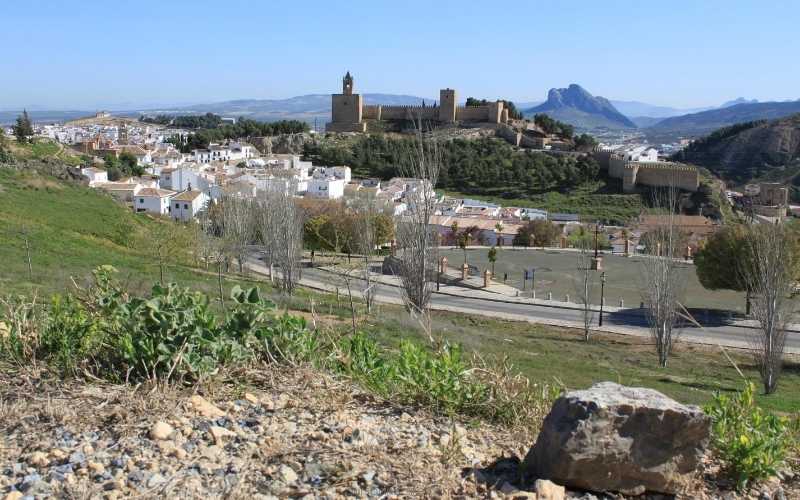
Formerly named as Antikaria, by the Romans, the typical Andalucia town of Antequera is located in the Malaga province of Spain.
It’s numerous Roman ruins bear witness to its glorious past.
Even a cursory visit to Antequera is bound to take you thousands of years back in time.
The prosperity the town achieved under the Roman era is evident from the many treasures from that age such as the small statue made of bronze of a boy ‘Ephebus of Antequera’ dating back to the first century AD.
The recently excavated Roman baths and some well preserved mosaics in the Roman villa have been discovered only in 1998, and are still being uncovered.
A large pool, belonging to the villa, ‘Carnicera de los Moros’ can also be seen here.
21. Villa Romana La Olmeda
This opulent villa contains some beautiful remnants to be found anywhere on the Iberian Peninsula.
Initially constructed in 1st century AD, the building was completely renovated three hundred years later, at which time some of the most stunning polychrome mosaics were added.
This important archaeological site of the Roman Empire was discovered by one Javier Cortes on his own private land, near the banks of river Carrion, in 1968 and handed over to the government after 12 years in 1980.
La Olmeda may not enjoy the same popularity as the ruins of Merida or Tarragona, but the site has gained international acclaim as one of the twelve best discoveries of modern archaeology.
Spain formed an important part of the Roman Empire for nearly 600 years, till taken over by the Visigoths in the fifth century.
Though a significant amount of notable Roman remains have been found in different regions, there are sites which are still being discovered through archaeological excavation even till today.
Related:
